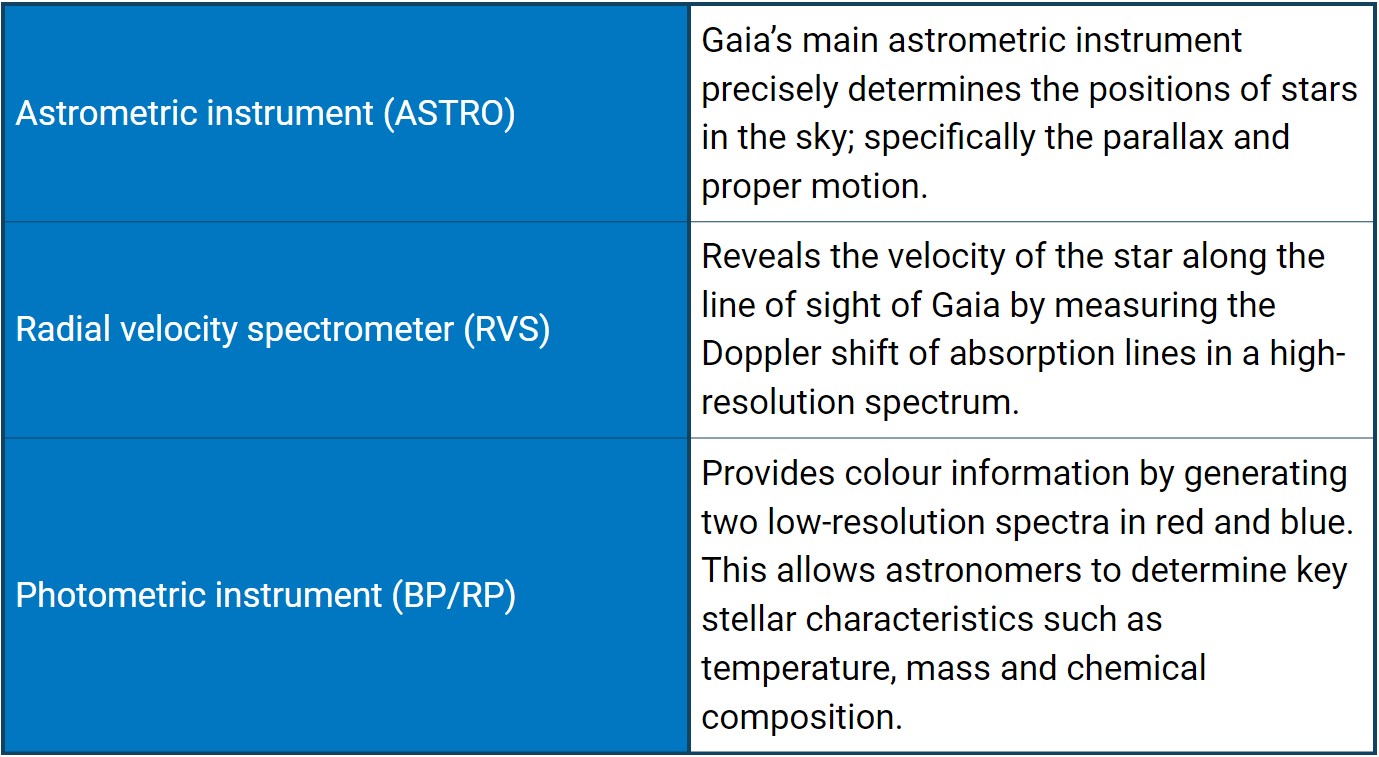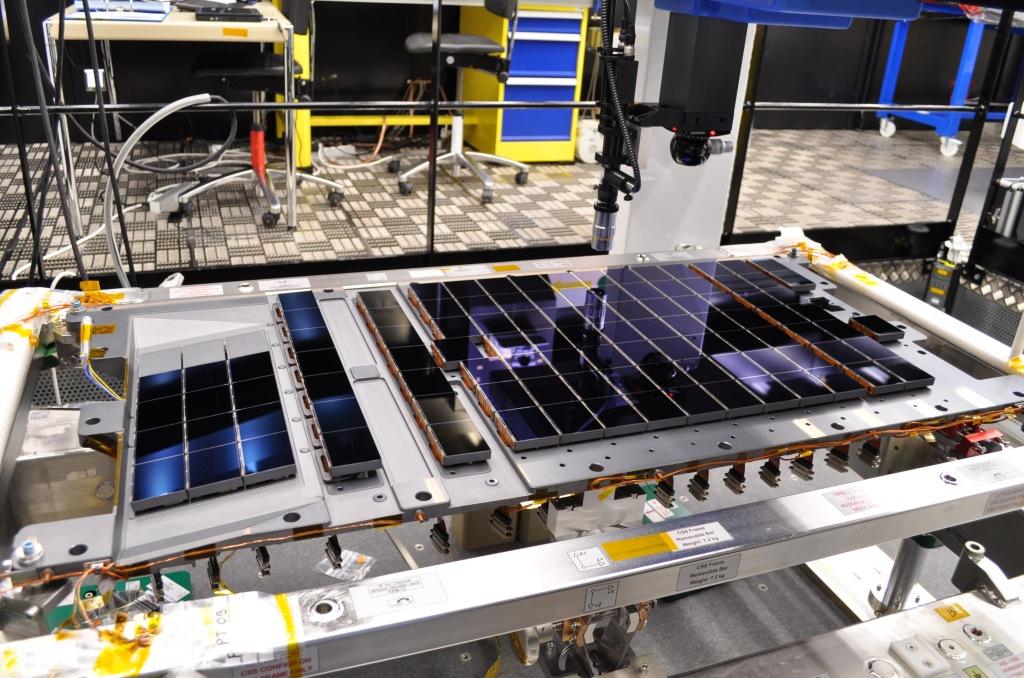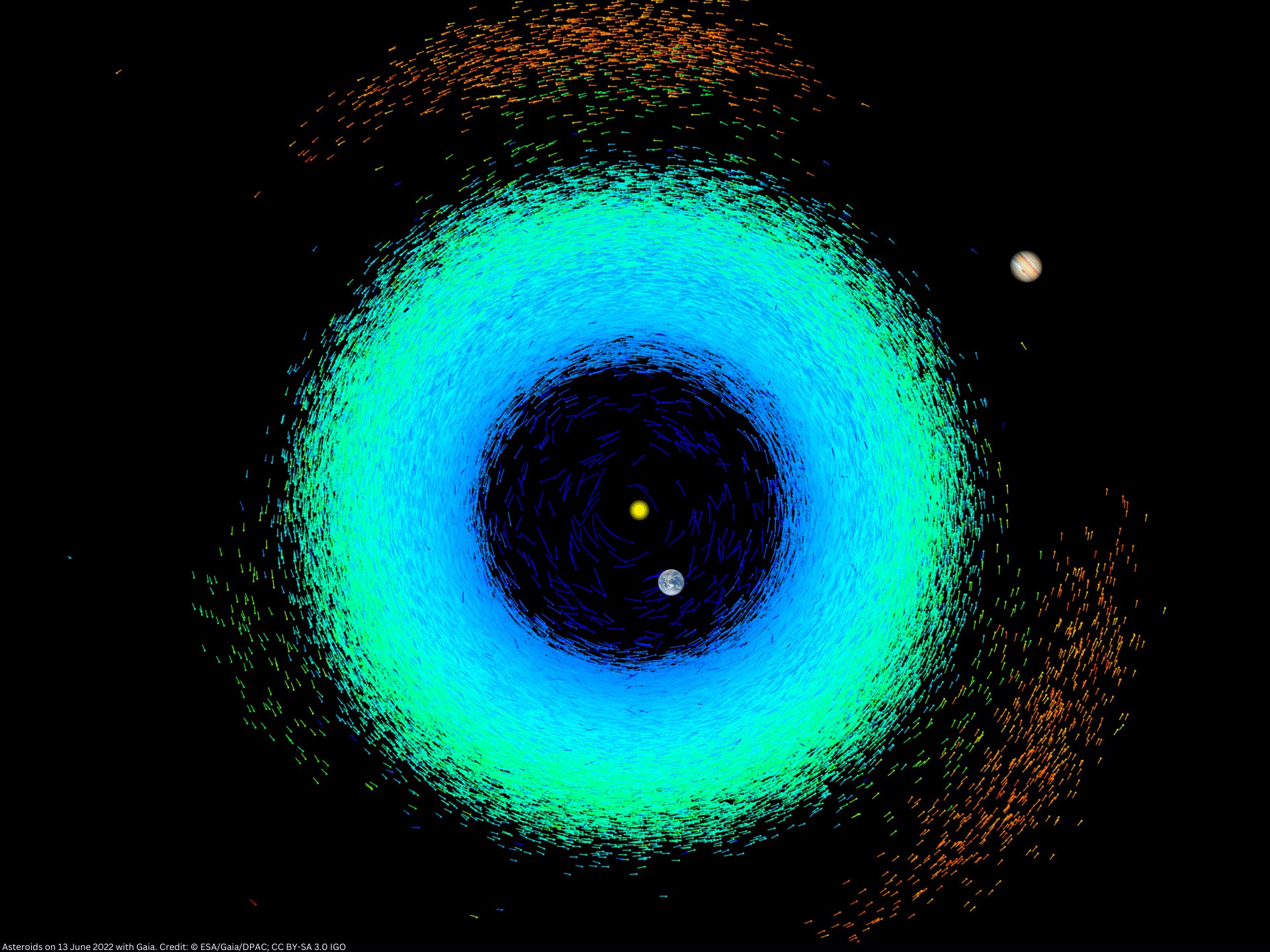Also containing information about mass and composition, Gaia’s astronomical census includes data needed to answer key questions about the origin, structure, and development of our Galaxy and Solar System. The pinpoint accuracy of Gaia’s measurements unlocks new datasets to examine the fundamental physics underpinning our entire Universe, and further test Albert Einstein’s General Theory of Relativity.
Over the course of the mission, Gaia monitored each of its target stars about 14 times per year, charting precise position, distance, speed, and luminosity over time to understand how they move and where they’re going. More than 99.9% of the objects surveyed had never had their distances measured accurately. Gaia’s predecessor, Hipparcos, chartered the positions of only about 100,000 stars.
Animation showing the proper motions of 40,000 stars, located within 100 parsecs (326 light years) of the Solar System.
Gaia can measure the positions of all objects down to magnitude 20 (about 400,000 times fainter than can be seen with the naked eye). For all objects brighter than magnitude 15, Gaia can measure their positions to an accuracy of 24 microarc seconds, comparable to measuring the width of a human hair at 1000 km (62 miles). Gaia can even measure the distance to stars nearly 30,000 light-years away, near the center of the Milky Way, with an accuracy of 20%.
 Each instrument uses a set of CCD detectors, which combine to make up the largest focal plane ever built for a space mission, mosaicked together from 106 separate CCD detectors and totalling one billion pixels. These rectangular detectors are a little smaller than a credit card, each one measuring 4.7×6 cm and slightly thicker than a human hair. The completed mosaic is arranged in seven rows of CCDs, with the main array made of 102 detectors for star detection.
Each instrument uses a set of CCD detectors, which combine to make up the largest focal plane ever built for a space mission, mosaicked together from 106 separate CCD detectors and totalling one billion pixels. These rectangular detectors are a little smaller than a credit card, each one measuring 4.7×6 cm and slightly thicker than a human hair. The completed mosaic is arranged in seven rows of CCDs, with the main array made of 102 detectors for star detection.

All Gaia CCDs integrated onto the CCD support structure. Image Credit: Astrium
Gaia’s orbit is at L2, far away from the protective atmosphere of the Earth, so it was designed to endure radiation and space debris impact. Though it has already survived well past its six-year design lifetime, it is not indestructible. In April of 2024, an unluckily precise strike from a micrometeoroid damaged the protective cover, allowing a slight amount of sunlight to disrupt Gaia’s very sensitive sensors. The next month, Gaia suffered an electronic failure when one of the controllers failed, resulting in the registration of thousands of false positives for stars. Through collaboration with ESA’s ESOC operations centre, ESTEC technology centre and ESAC astronomy centre, along with experts from Airbus Defence and Space, and the Data Processing and Analysis Consortium, developed a software patch to fix the issue. They reduced the threshold at which Gaia’s software identifies a faint point of light as a star, and it returned to normal operations in July.
By the end of its mission in 2025, Gaia will have surveyed about 1% of the stars in the galaxy. The Gaia Data Processing and Analysis Consortium (DPAC) processes the raw data transmitted from the Gaia satellite and periodically releases updates to the largest stellar catalogue ever made. Further compilation and analysis of the data will help astronomers investigate the universal forces that shape our Milky Way.
Understanding Dark Matter
On the outskirts of the Milky Way, among streams of stars and debris, star clusters and dwarf galaxies, lies the so-called dark matter halo; a vast collection of material that appears to be dominated by invisible dark matter. Gaia is studying this halo in depth to understand how much dark matter exists and how it is distributed through space. In some cases, Gaia data is supplemented by targeted observations from the Hubble Space Telescope.
Determining the Age of the Universe
Gaia teamed up with NASA’s Hubble Space Telescope to refine the Hubble Constant: the rate of the Universe’s expansion which is used to estimate its age. Cepheid variables are a special type of star used to calculate distance based on their brightness. Hubble collected precise brightness measurements of 50 cepheids, while Gaia recorded the precise geometric measurements of those stars.
Shaping the Milky Way
It was previously believed that the Milky Way had formed on its own. Gaia revealed that our galaxy has merged (i.e. collided) with six other distance star groups. Most are thought to have occurred between eight and ten billion years ago.
While astronomers knew that the Milky Way’s disc is asymmetrical, the cause had remained unknown. Gaia revealed that our galaxy is caught in a series of ongoing collisions with another smaller galaxy–Sagittarius. These collisions sent disruptive waves through the Milky Way, causing the galaxy to warp and wobble. Furthermore, they may have triggered the Sun and Solar System formation.
Improving Space Navigation
The star chart created by Gaia will be of great use for current and future space missions. A celestial reference frame is a fixed, imaginary grid against which everything else moves, similar to latitude and longitude. Prior to Gaia’s launch, the celestial grid was based on radio observations of several thousand quasars. Gaia’s reference frame is based on half a million quasars seen in the visible wavelengths used by most astronomers.
This newer reference frame was used by NASA’s New Horizons probe to perform a last-chance adjustment to accurately frame a series of flyby images of the probe’s target, the Arrokoth asteroid.
Other Scientific Highlights
In 2020, Gaia spotted the largest gaseous structure ever seen in our galaxy: a long, thin, undulating ensemble of interconnected stellar nurseries located in the spiral arm close to Earth. Gaia’s precise measurements of stars’ positions and motions have also revealed the shape and thickness of star-forming regions in three dimensions – the first time these so-called molecular clouds have been mapped in this way.
The discovery of very old stars in the Milky Way’s core that lack the heavier metals created later in the Universe’s lifetime. Researchers identified these stars by exploring two million bright giant stars in our galaxy’s inner regions.
Revelation that white dwarfs, the dead remnants of stars like our Sun, turn into solid spheres as the hot gas inside them cools down.
Revelation that part of the Milky Way known as the ‘thick disc’ began forming 13 billion years ago, around 2 billion years earlier than expected, and just 0.8 billion years after the Big Bang.
Detection of 'starquakes' – tiny motions on the surface of a star that change the shapes of stars, something the observatory was not originally built for.
Charting the highest accuracy survey of asteroids (including near-Earth asteroids) combining their compositions with their orbits.  IThe position of each asteroid at 12:00 CEST on 13 June 2022 is plotted. Image Credit: P. Tanga (Observatoire de la Côte d'Azur), ESA/Gaia/DPAC; CC BY-SA 3.0 IGO
IThe position of each asteroid at 12:00 CEST on 13 June 2022 is plotted. Image Credit: P. Tanga (Observatoire de la Côte d'Azur), ESA/Gaia/DPAC; CC BY-SA 3.0 IGO
Discovery of many new stellar streams and stellar clusters alongside the discovery of more known rare stars, new hypervelocity stars, new asteroids, new exoplanets, empty bubbles in space, and gaseous structures in space.
Improved stellar occultation shadow track predictions, massively improving the chance to successfully observe stellar occultations from Earth.
Banner Image Credit: ESA/Gaia/DPAC; CC BY-SA 3.0 IGO. Acknowledgement: A. Moitinho